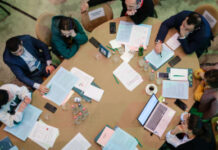By Aram Arkun
Mirror-Spectator Staff
CAMBRIDGE, Mass. — On January 13, Dr. Taner Akçam, Kaloosdian-Mugar Chair in Modern Armenian History and Genocide Studies at Clark University, presented a talk at Holy Trinity Armenian Church titled, “Giving Voice to the Voiceless: Armenian Genocide Survivors and the Aleppo Rescue House of the League of Nations.”
The Knights and Daughters of Vartan and the National Association for Armenian Studies and Research (NAASR) were cosponsors of the well-attended dinner and lecture with Akçam, and Knights of Vartan Ararat Lodge No. 1 Commander Hagop (Jack) Kouyoumjian and Marc Mamigonian, director of academic affairs of NAASR introduced the program.
Akçam presented information about the efforts of the League of Nations to rescue Armenian Genocide survivors from Muslim households in the period between 1922 and 1930. The archives of the League in Geneva, Switzerland, contain notebooks with 1,664 surveys of survivors, primarily women and children, admitted to a rescue house in Aleppo run by the Danish missionary Karen Jeppe from 1922. These surveys, in English, describe the origins of the survivors, the story of their survival and information about their experiences after arrival in the house. They often include their passport-size photographs. They gradually are being placed on-line at www.armenocide.net as a unique resource for the study of the Armenian Genocide.











